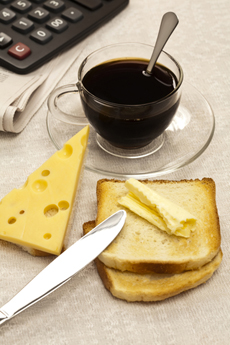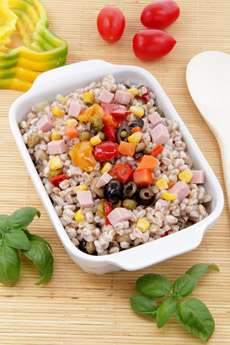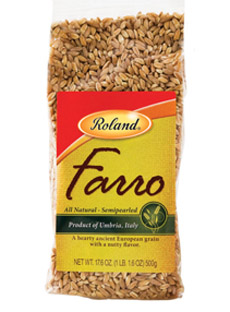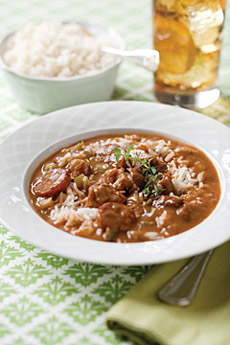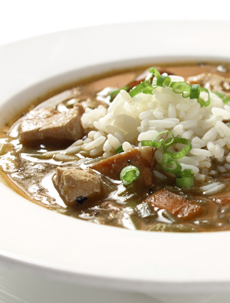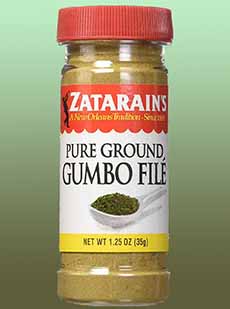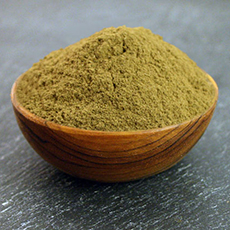|
January 19th is National Popcorn Day. We asked chef Johnny Gnall to come up some alternative ways to enjoy it.
He fired back with: POPCORN: IT’S NOT JUST FOR MOVIE NIGHT ANYMORE.
Enjoy his recipe ideas, below.
In honor of National Popcorn Day, I spent some time popping a heck of a lot of popcorn and finding stuff to do with it—besides eating my weight in popcorn while watching a John Hughes marathon.
Popcorn is pretty cheap, so feel free to stock up and then try as many of these as you want.
Each of the ideas below can be used with plain popcorn if you want to keep it neutral. But feel free to spice things up, so to speak:
You can flavor your popcorn with anything from Tabasco to ginger to garlic to nori powder.
DRY IS BETTER: Do your best to keep added ingredients dry: Wet popcorn can be relatively unpleasant. This means you should be sparing with oils, vinegars and sauces, using just enough to get your flavors to stick, and adding them just before serving the popcorn.
WAIT UNTIL JUST BEFORE SERVING: Also hold off on adding popcorn to something wet (like salad or ceviche—Ecuadorians top their ceviche with popped corn) until the last minute, so it doesn’t sit there soaking.
SOUP: MAKE YOUR SOUPS “POP”
From a steaming bowl of chowder to cool, clean gazpacho; from creamy puréed cauliflower soup to tart cherry soup:
Popcorn is the garnish that adds a pleasant, fluffy bite to any spoonful. It’s also a dazzling garnish when placed delicately upon the surface of a beautiful soup.
FRIED CHICKEN OR FISH: BATTER UP
Pop some popcorn, then crush it by placing plain or flavored popcorn in an unsealed plastic bag; gently roll over it a few times with a rolling pin or a wine bottle.
Put it aside and prepare your mise en place for fried chicken or fish: egg wash, flour, oil, etc.
After you dredge the chicken, roll it in the crushed popcorn as your last step before frying.
You can press the crushed kernels gently into the chicken/fish to help them stick. Don’t try to entirely cover the protein in popcorn, or it may burn before the chicken cooks.
PICNIC SALADS: POPPING UP
Popcorn is a terrific addition to comforting food salads like chicken salad, potato salad, even pasta salad.
As mentioned above, hold off on adding popcorn to the dish until just before serving, to keep the kernels from getting too soggy.
You can use the popcorn as a foil to the richness of a salad by seasoning it with bright, clean flavors: Lemon zest and a little cayenne works like gangbusters.
THE UN-CROUTON
Croutons add a swell crunch to salads; but for those who can’t stomach gluten, croutons are obviously a no-go unless you make them from gluten-free bread.
To get that crunch and add another layer of flavor to any salad with less effort, pop some popcorn (corn is gluten free) and toss it with olive oil, spices, salt and pepper.
Then, sprinkle it over a bowl of salad. You may end up swearing off croutons altogether, opting for this healthier, whole grain, air-popped alternative.
GOAT CHEESE: LAYER YOUR LOG
You may be surprised at what a delight can come from a store-bought log of chèvre (goat cheese), some popcorn and a little imagination.
Pop, season and gently crush the popcorn as described above, then set aside.
Remove the log of chèvre from its packaging and bring it to room temperature; then drizzle it with a little olive oil and roll it in the plain or flavored popcorn to coat evenly.
You can also mix the crushed popcorn with some chopped nuts or dried fruit to add a variety of flavors and textures. We love pistachios with dried cherries, or sliced almonds and orange zest.
MOULES FRITES: HOLD THE FRITES
When you’re having a big, steaming bowl of mussels or clams, one of the best parts is sopping up the hearty, sumptuous broth at the bottom.
Crusty bread is perfect, and crispy shoestring fries are a close second. But for those who seek a healthier alternative, popcorn may be just the ticket.
Yes, we have been avoiding getting our popcorn soggy up to this point; but when the stuff doing the sogging is rich, warming, white wine and shallot and butter perfection, we don’t mind a mouthful of popcorn soaked in it.
You may even want to keep a bowl of the popcorn at your side to re-up throughout the meal.
THE ICING ON THE CAKE
Most people love popcorn, and most people love desserts. So it doesn’t take a genius to figure out that popcorn on or in dessert is a home run.
You can look to the obvious, caramel corn, and all of its scrumptious forms and variations: popcorn balls, Fiddle Faddle, Moose Munch from Harry & David….
The tried-and-true team up of popcorn, caramel and virtually anything else is likely to end up delicious.
But a combination I find even more enticing (thought admittedly more naughty) is the pairing of lightly salted popcorn with cake frosting.
I go crazy for a chocolate-frosted layer cake sprinkled with gently crushed, salted popcorn/
A single, flavored (or even chocolate dipped) kernel of popcorn at the peak of cupcake is an easy, tasty garnish; and for kids, a fluffy popcorn rain that covers the whole cupcake can be even more fun, both to assemble and to eat!
MOVE OVER, MICROWAVE
Enjoy these simple, creative ways to get the most out of what most people know only as a snack food; and never be afraid to think outside the kernel (pun inevitably intended).
Get popping (no pun intended), and remember that microwave popcorn should never be an option!
Stove-top popping takes literally five minutes and is easy as can be.
You’ll also avoid diacetyl, a chemical used in the production of microwave popcorn that has caused “popcorn lung”—a disease that’s not at all tasty.
|
